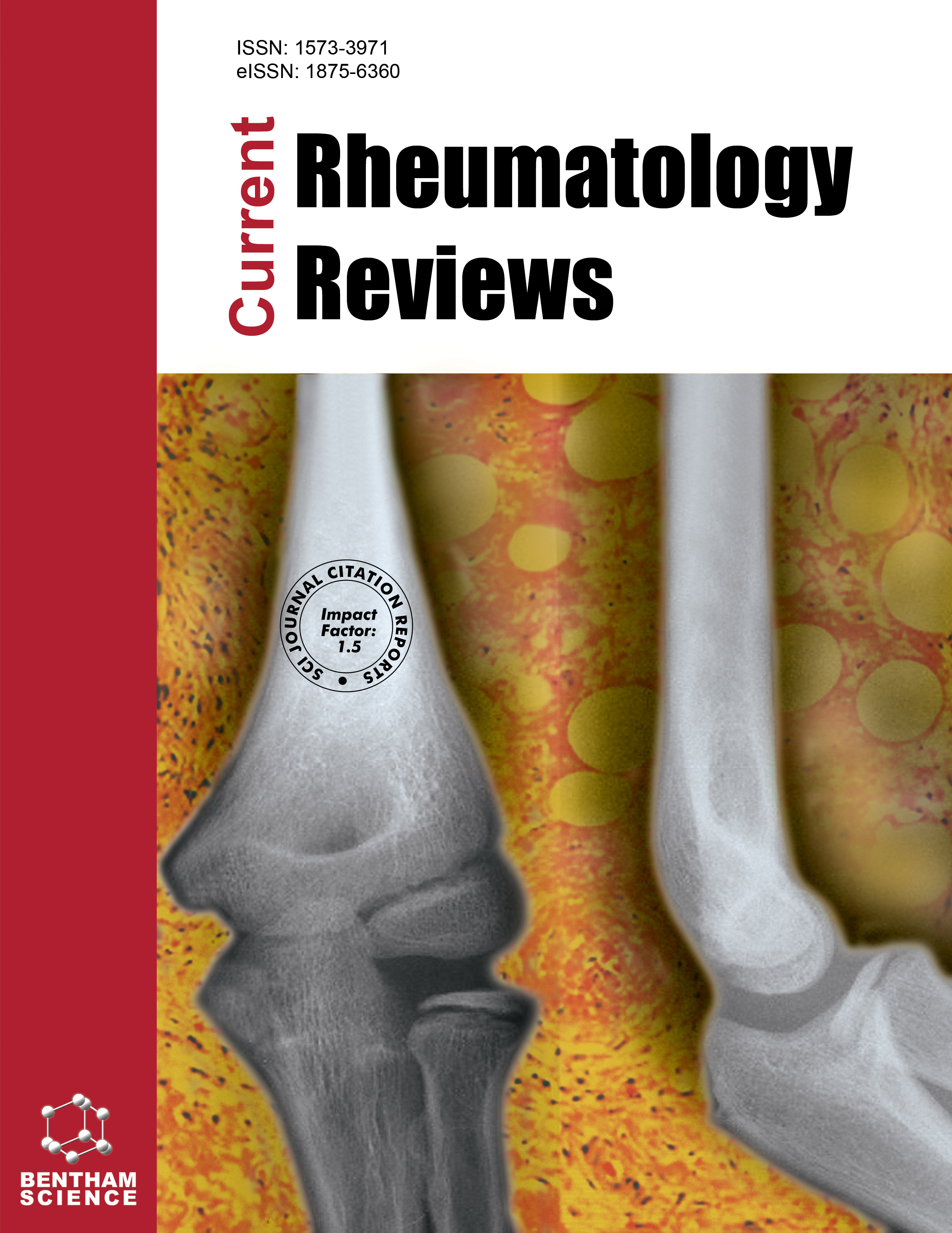-
oa Editorial [Hot topic: Interstitial Lung Disease with Connective Tissue Diseases (Guest Editor: Eric Matteson)]
- Source: Current Rheumatology Reviews, Volume 6, Issue 2, May 2010, p. 88 - 90
-
- 01 May 2010
Abstract
The interstitial lung diseases (ILD) are a heterogeneous group of pulmonary disorders which diffusely affect the lung parenchyma including the small airways and alveolar structures. While many are of unknown cause, others have known clinical associations including infection, a diversity of inhaled, oral or parenteral exposures (including drugs, tobacco smoke, occupational and environmental exposures), and a variety of systemic diseases. In particular, ILD frequently complicates connective tissue disease (CTD), having a major negative impact on quality of life and disease course; pulmonary involvement is the leading cause of death in systemic sclerosis and an important cause of morbidity and mortality in other connective tissue diseases including rheumatoid arthritis, Sjogren's syndrome, systemic lupus erythematosus and inflammatory myopathies. In many ways, connective tissue disease-associated ILD (CTD-ILD) remains an enigma. Our understanding of underlying pathogenesis and ability to detect these conditions early remain quite limited. For the clinician and clinical researcher, there exists no consensus on appropriate measurement of disease activity or what constitutes a significant response to therapeutic intervention. The lack of this information inhibits effective drug development and hampers the regulatory evaluation of candidate therapies. For example, in recent years, using pathologic insights gleaned from the biologic investigation of autoimmunity, a diverse range of data-driven “rational” therapies has emerged, from broad immunosuppressants (cyclophosphamide, mycophenolate mofetil) and antifibrotics (tyrosine kinase inhibitors, pirfenidone) to more specifically targeted interventions (rituximab, TGF-β trapping strategies). While substantial progress might have been expected from trials evaluating their efficacy, lack of validated and accepted criteria for assessment of disease activity or response to treatment has hampered our ability to interpret their results. Without cohesive domains and measures, there is no way to safeguard the investments made by research and development. This issue of Current Rheumatology Reviews addresses this important area. There are emerging data relevant to ILD in the setting of each specific CTD yet there are also strong commonalities between them. Many questions remain regarding shared pathogenic mechanisms but also importantly about approaches which should be taken by the bedside clinician and the clinical researcher. Is there a core group of measures that can define activity, response and outcome? Is quantification of the extent of lung disease by high resolution CT a generalizable measure or only a tool for focused research? Pulmonary physiologic testing, e.g. forced vital capacity, is accessible, reproducible, cost effective and sensitive to change but is it confounded by concurrent chest wall weakness or pleural disease? What about exercise capacity, e.g. six minute walk testing - a robust outcome measure in trials of pulmonary hypertension? How does this apply to the individual with active lower extremity joint disease? Importantly, also, each of the CTDs has its own unique set of clinical features which may affect not only the type and expression of associated lung disease but also the exact nature of pulmonary involvement in individual patients. This relationship is particularly relevant to the study of specific CTD-ILD in randomized controlled trials (RCTs). For example, what is the utility of exercise testing in a patient with rheumatoid arthritis who has a high disease activity score and/or lower extremity joint involvement? How do these disease features affect the performance and interpretation of pulmonary function tests? To what extent does muscle involvement in patents with dermatomyositis, or sicca syndrome in patients with Sjogren's syndrome, adversely affect the performance of pulmonary function testing. To date, there is no agreement on the best approach to evaluation of lung involvement in the clinic or in the context of clinical trials for any single CTD-associated ILDs. How best to approach the problem of lung disease assessment in CTD-ILD for study in an RCT? To address this, a review of the available relevant literature can serve as a useful starting point, as presented in this volume of CRR. Information from the literature, interpreted by clinician scientist's expert in these diseases, forms a useful basis for evaluating the best evidence for developing outcome criteria for RCTs in CTD-ILD. A formal process to develop consensus can then provide an initial approach for assessment of lung disease in these CTDs, which necessarily will be followed by formal testing in RCTs and longitudinal observational studies (LOS)....


